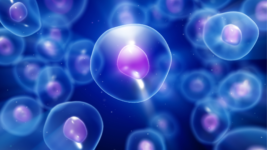
Creature found in lake of cyanide can unlock animal origin secrets
Researchers from the University of California, Berkeley, have discovered an unusual creature in Eastern Sierra Nevada’s Mono Lake. This organism could provide insights into the complex animal life that originated on Earth over 650 million years ago.
The lake is famous for being home to creatures like shrimp and alkali flies.
The latest organism discovered is a type of choanoflagellate, a microscopic, single-celled life form that can develop into multicellular colonies.
Choanoflagellates in Mono Lake: Insight into early multicellular life and bacterial symbiosis
The choanoflagellate isn’t typically an animal, however, it’s a member of a sister group to all animals. They also make for an interesting study from a one-cell to a multi-cellular life.
It can form a safe and stable relationship with the bacteria. Nicole King, a UC Berkeley professor of molecular and cell biology, said: “Very little is known about choanoflagellates, and there are interesting biological phenomena that we can only gain insight into if we understand their ecology.”
These organisms are typically visible through a microscope. But they can give great insights into creatures which emerged in the oceans much before animals. King added that animals evolved in the oceans which were filled with bacteria.
This research spans a decade old research when a student named Daniel Richter collected a sample of Mono Lake during his climbing trip.
“While I was in graduate school in Berkeley in Nicole’s lab, I liked to escape for long weekends to the high desert of the Eastern Sierra Mountains together with friends,” Richter told Newsweek.
“To my surprise, almost every flask contained a high proportion of choanoflagellates, higher than in any other environment I had ever sampled,” he added.
Previously, King also added that the presence of bacteria was a huge surprise in the lake. He also mentioned that in his previous studies, these organisms would often respond to small bacterial molecules.
These molecules would float through the water, an indication that the chanos were eating the bacteria. King collaborated with other researchers who later identified similar bacterial species in the Mono Lake.
The researchers revealed that there might be a possibility that the choanoflagellates could walk in the path of bacteria.
Bacteria are known to detoxify the environment in which they are found. They also added the possibility that they might also be farming the bacteria, with the intention of eating them later.
Mono Lake’s unique environment and its potential for biodiversity
Even though a lot of this discovery is left to speculation it definitely opens up doors for future research. This discovery will also help us understand interactions better between simple organisms and bacteria. It will also help to delve deep into the origins of symbiosis and microbiomes in their early forms.
About Mono Lake, it’s hypersaline, has three times the salinity of the ocean, and is also super hyperalkaline. Apart from this, researchers also say that the lake also consists of high levels of toxins, cyanide being one of them.
Owing to these qualities, the lake has an inhospitable environment and is home to the hardest extremophiles. The lake is also famous for having a low biodiversity.
However, with this discovery the dynamics can shift to a certain percentage, making it a place for a lot of aquatic animals.
ABOUT THE EDITOR
Gairika Mitra Gairika is a technology nerd, an introvert, and an avid reader. Lock her up in a room full of books, and you’ll never hear her complain.



